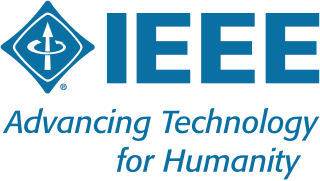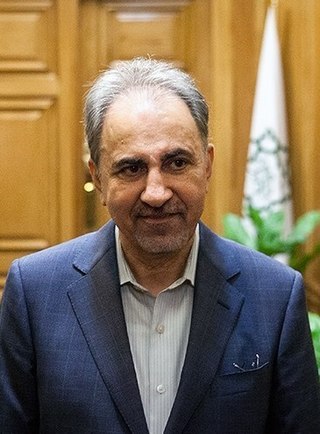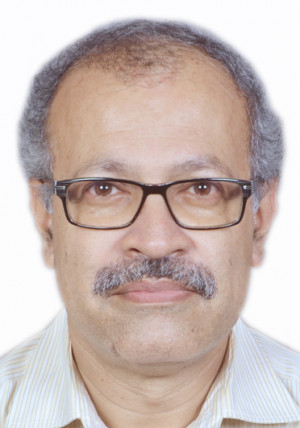Related Research Articles

Electrical engineering is an engineering discipline concerned with the study, design, and application of equipment, devices, and systems which use electricity, electronics, and electromagnetism. It emerged as an identifiable occupation in the latter half of the 19th century after the commercialization of the electric telegraph, the telephone, and electrical power generation, distribution, and use.

The Institute of Electrical and Electronics Engineers (IEEE) is an American 501(c)(3) professional association for electronics engineering, electrical engineering, and other related disciplines.

The University of Tehran is the oldest and most prominent Iranian university located in Tehran, Iran. Based on its historical, socio-cultural, and political pedigree, as well as its research and teaching profile, UT has been nicknamed "The Mother University [of Iran]". In international rankings, UT has been ranked as one of the best universities in the Middle East and is among the top universities of the world. It is also the premier knowledge producing institute among all OIC countries. Tehran University of Medical Sciences is in the 7th ranking of the Islamic World University Ranking in 2021. The university offers more than 111 bachelor's degree programs, 177 master's degree programs, and 156 PhD. programs. Many of the departments were absorbed into the University of Tehran from the Dar al-Funun established in 1851 and the Tehran School of Political Sciences established in 1899.

Sharif University of Technology (SUT) ; (Persian: دانشگاه صنعتی شریف, romanized : Dāneshgāh-e sana'ti-e sharif) is a public research university in Tehran, Iran. Nicknamed "the MIT of Iran", It is widely considered to be the nation's most prestigious and leading institution for science, technology, engineering, and mathematics (STEM) fields. Every year, the smartest and the most prospective students in Iran, ranked according to the results of the Iranian University Entrance Exam, choose to study at SUT at Bachelor's, Master's as well as PhD levels. For those students who wish to study STEM related fields, especially the most popular ones such as Computer engineering, Electrical engineering and Mechanical engineering, Sharif University of Technology is the toughest Iranian university to get admission to.

Amirkabir University of Technology (AUT), also called the Tehran Polytechnic, is a public technological university located in Tehran, Iran. Founded in 1958, AUT is the oldest technical university established in Iran.

Mohammad Reza Aref is an Iranian engineer, academic and reformist politician who is the eighth and current first vice president of Iran since 2024, under President Masoud Pezeshkian. He is also currently member of the Expediency Discernment Council since 2002.

Iran University of Science and Technology (IUST) (Persian: دانشگاه علم و صنعت ایران, Daneshgah-e 'elm vâ Sân'at-e Iran) is a research institution and university of engineering and science in Iran. The university is home to 15 faculties offering undergraduate and postgraduate degrees in a wide range of engineering-based subjects as well as maths, physics, and department of foreign languages. In 1995 IUST awarded Iran’s first PhDs in materials, metallurgical and traffic engineering. IUST is the only university in the Middle East which has a school of railway engineering and a school of progress engineering. It is also the only university in Iran which has a school of automotive engineering. There are also 12 research centres, nine centres of excellence and 19 specialised libraries as well as four satellite campuses in other parts of the country. IUST is located on Hengam Street in the Narmak neighborhood in northeast Tehran.

The Isfahan University of Technology (IUT) is a leading public university in Iran, situated near the city of Isfahan. The university comprises 14 faculties and departments, serving approximately 11,000 students and employing 600 academic staff members. IUT offers undergraduate, graduate, and doctoral programs across four main disciplines: engineering, basic sciences, agriculture, and natural resources. Notably, IUT was the first Iranian university to gain membership in CERN.

Mohammad-Ali Najafi is an Iranian mathematician and reformist politician who was the Mayor of Tehran, serving in the post for eight months, until April 2018. He held cabinet portfolios during the 1980s, 1990s and 2010s. He is also a retired professor of mathematics at Sharif University of Technology.
Babak Hassibi is an Iranian-American electrical engineer, computer scientist, and applied mathematician who is the inaugural Mose and Lillian S. Bohn Professor of Electrical Engineering and Computing and Mathematical Sciences at the California Institute of Technology (Caltech). From 2011 to 2016 he was the Gordon M Binder/Amgen Professor of Electrical Engineering. During 2008-2015 he was the Executive Officer of Electrical Engineering and Associate Director of Information Science and Technology.
Inspec is a major indexing database of scientific and technical literature, published by the Institution of Engineering and Technology (IET), and formerly by the Institution of Electrical Engineers (IEE), one of the IET's forerunners.

Babol Noshirvani University of Technology (BNUT), sometimes also referred to as Noshirvani Institute of Technology or NIT, is a public research university and Institute of Technology in Babol, Mazandaran Province in the north of Iran, 20 km (12 mi) south of the Caspian Sea. The university is an influential center for academic research in Iran, due to which it has been consistently ranked among the top schools in the country. BNUT is currently ranked 1st among all Iranian universities according to Times Higher Education (THE) World University Rankings. THE has also ranked BNUT between 351st and 400th among world universities, 55th among the world's young universities, as well as 43rd among Asian universities.

Dr. Mohammad Shahidehpour is a prominent figure in the field of electrical engineering, currently serving as the Carl Bodine Distinguished Professor and Chairman of the Electrical and Computer Engineering Department at Illinois Institute of Technology (IIT). With over 300 technical papers and five books to his name, Shahidehpour has made significant contributions to electric power systems planning, operation, and control. His research has been instrumental in advancing the understanding of electricity restructuring and the integration of renewable energy sources into the power grid, making him a globally recognized expert in his field.
Middle Eastern Americans are Americans of Middle Eastern background. Although once considered Asian Americans, the modern definition of "Asian American" now excludes people with West Asian backgrounds.
The Capital University of Science & Technology is a private university located in Islamabad, Pakistan. Established in 1998 under the banner of Muhammad Ali Jinnah University Islamabad Campus, the university offers undergraduate and post-graduate programs with a strong emphasis on business management, applied sciences, engineering and computer science.
The Iran Workshop on Communication and Information Theory (IWCIT) is an international academic workshop that is held annually in one of the Iranian University campuses. The purpose of this workshop is to bring together researchers at the frontiers of communication and information theory worldwide to share and engage in various research activities.

Soumitro Banerjee is an Indian electrical engineer and former director of the Indian Institute of Science Education and Research, Kolkata. He is known for his studies on bifurcation phenomena in power electronic circuits and is an elected fellow of all three major Indian science academies: the National Academy of Sciences, India, Indian Academy of Sciences, and Indian National Science Academy. He is also a fellow of The World Academy of Sciences, Institute of Electrical and Electronics Engineers, West Bengal Academy of Sciences and the Indian National Academy of Engineering. The Council of Scientific and Industrial Research, the apex agency of the Government of India for scientific research, awarded him the Shanti Swarup Bhatnagar Prize for Science and Technology, one of the highest Indian science awards for his contributions to Engineering Sciences in 2003.

Mona Jarrahi is an Iranian Engineering professor at the University of California, Los Angeles. She investigates novel materials, terahertz/millimeter-wave electronics and optoelectronics, microwave photonics, imaging and spectroscopy systems.
References
- ↑ "Mohammad Mahdi Nayebi". Google Scholar Citations . Retrieved 8 January 2019.
- ↑ "Hami Members". Haamee Institute (in Persian). Retrieved 8 January 2019.